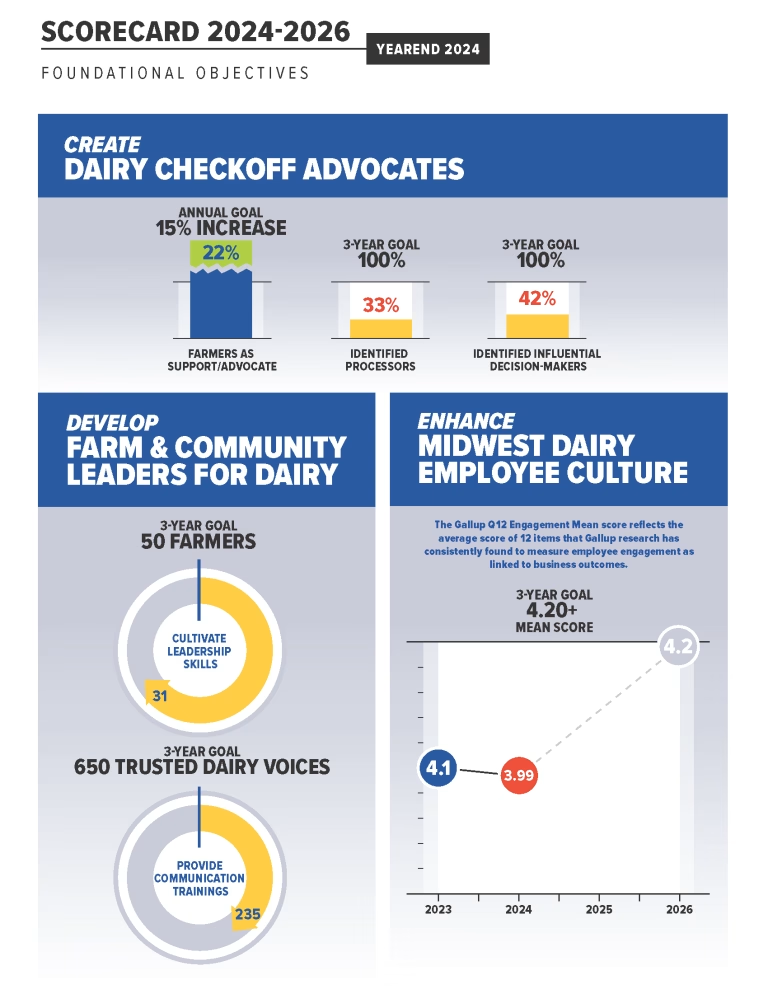
2024 Annual Scorecard
Midwest Dairy produces an annual scorecard measuring outcomes across several business and foundational goals, including increasing dairy sales, growing trust in dairy, and more.
Keep reading the 2024 Midwest Dairy Scorecard to see how your dairy checkoff investment performed.
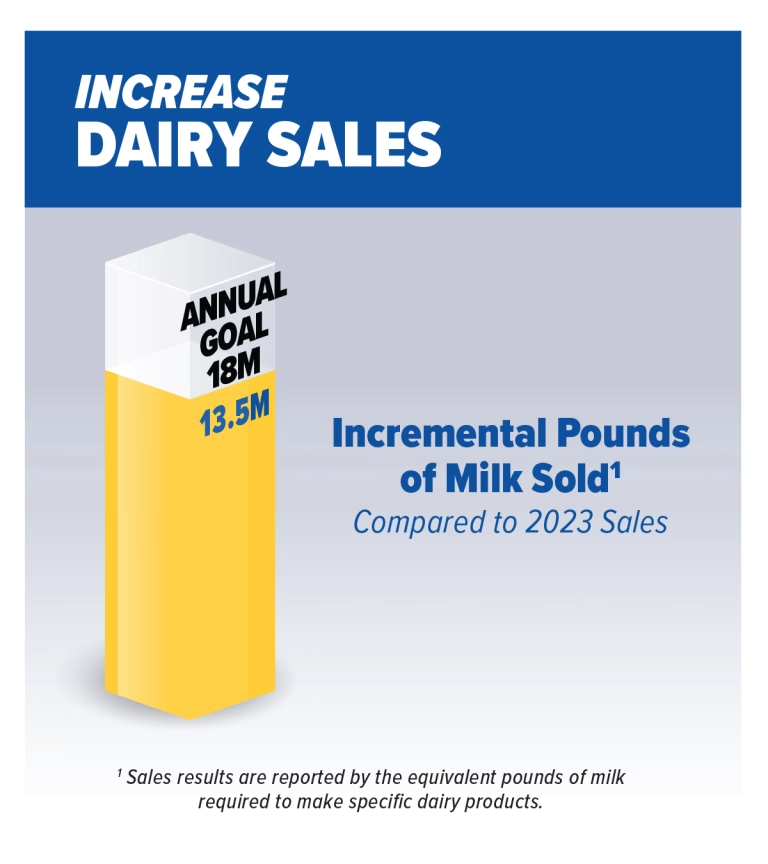
Increasing Sales
In 2024, Midwest Dairy reported 56 retail activations generating 10.2 million incremental pounds of milk sold (IPM) and six foodservice activations generating 3.3 million IPM for a total of 13.5 million IPM. Of the 56 retail activations, results from 12 carried over from 2023. There was a compounding impact on our total sales goal due to the reporting cycle of negative sales from late 2023 holiday retail activations coupled with some lost momentum caused by foodservice staff turnover.
Retail growth in 2024 was driven by increased dairy consumption at home, as inflation pushed consumers to value retailers like Walmart, Aldi, and Costco. Top dairy categories (cheese, butter, ice cream, yogurt) saw volume increase, with yogurt rising by 7.5%. Fluid milk volume slightly declined (-0.2%) in the retail sector but had significant increases in value-added milks. In foodservice, six activations generated 3.3 million IPM, with pizza partnerships notably contributing to the growth, including a collaboration with Marco’s Pizza that drove over 2 million IPM. The overall trend suggests more home-based dairy consumption amid rising food prices.
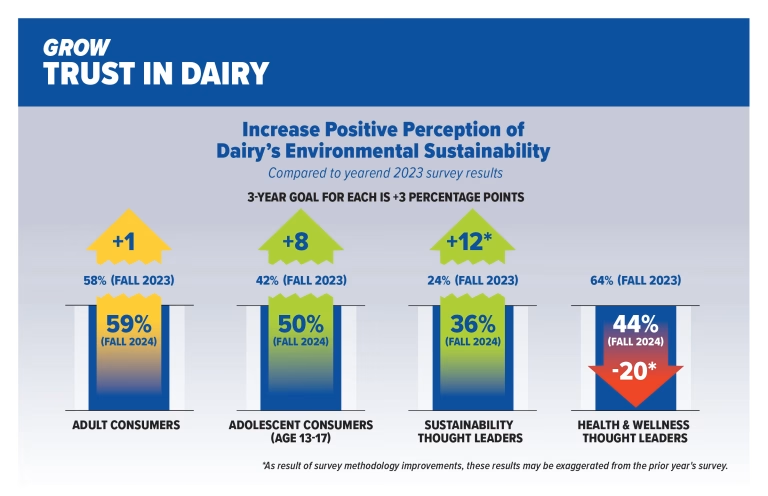
Grow Trust
Our 2024 consumer sentiment surveys show a positive shift in perceptions of dairy as being environmentally sustainable. Among adults, 59% agree that dairy is environmentally friendly. Among adolescents (13-17), the increase was more significant, however with only 50% agreement, there is still room for improvement. When asked what sustainability issue is of most importance, animal care is at the top of the list for adult and adolescent consumers.
In 2024, Midwest Dairy conducted a new survey with 100 sustainability and 100 health experts to measure dairy’s environmental perception. The results cannot be compared to previous years due to differences in sample size and methodology. Our staff held 94 meetings, hosted 15 events, attended 54 gatherings, and identified 65 new thought leaders with potential for partnership. Thirty five activations were completed. Our event pre and post surveys showed increases in positive perception ranging between 37% and 100% among attendees.
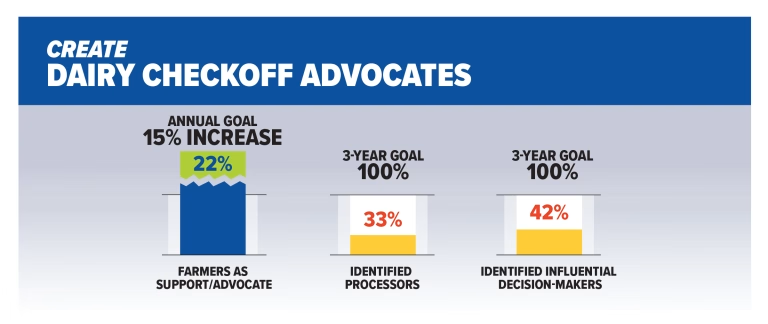
Create Advocates
Keeping dairy farmers informed about their checkoff investment is a top priority for our board and staff. This year, we surpassed our goals by discovering innovative and creative ways to engage with farmers. Enhancing farmers’ understanding and advocacy of the checkoff program is crucial. Moving forward, we will continue to prioritize farm visits as a vital means of connecting with Midwest Dairy farmers.
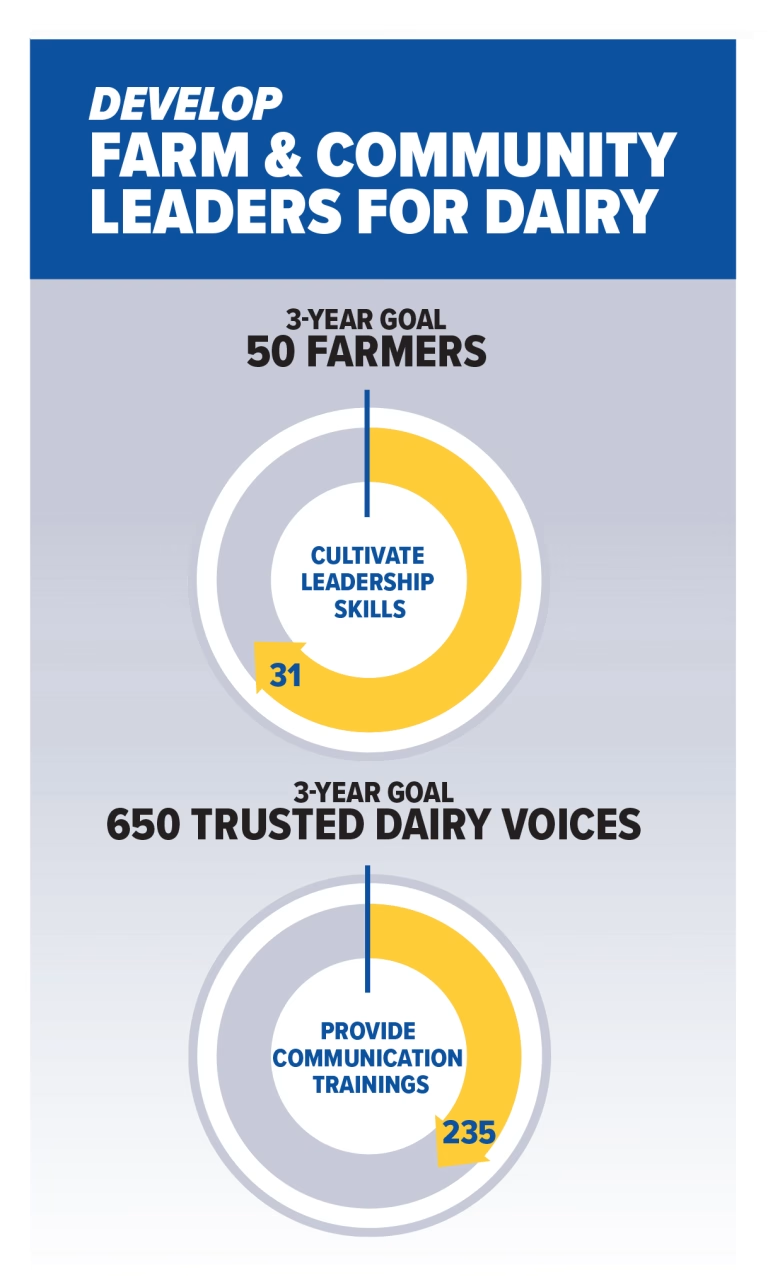
Develop Leaders
Midwest Dairy is dedicated to cultivating farm and community leaders within the dairy industry. Our goal is to empower more farmers to share their stories with consumers and prepare them for future leadership roles. We continue to explore new methods to help our farmers enhance their leadership skills. We are on track to achieve our three-year goal.
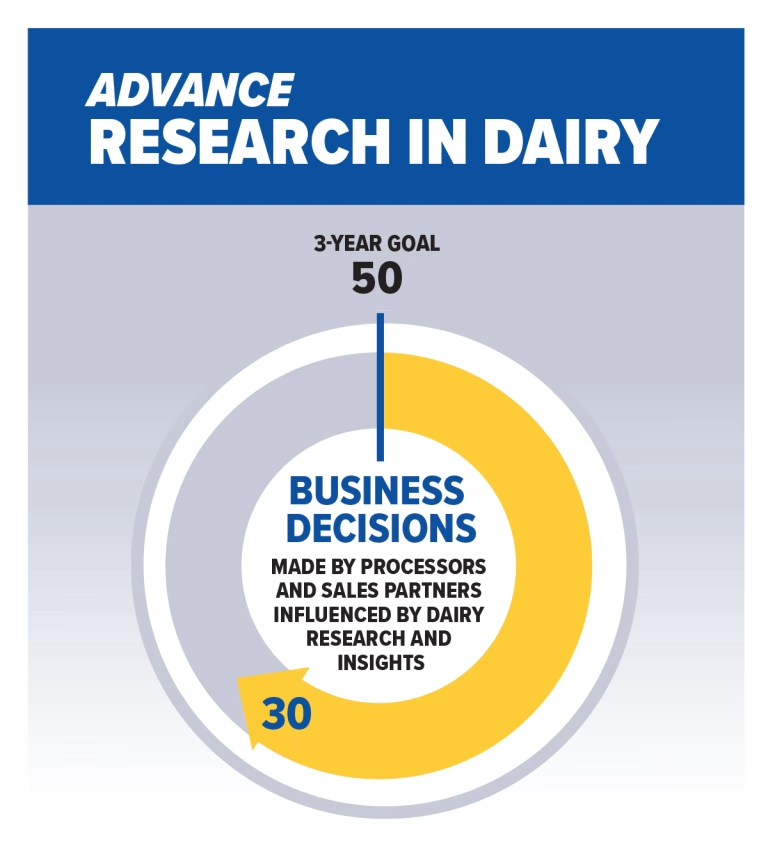
Advancing Research
Midwest Dairy is on track to meet our three-year goal of helping sales partners and processors improve business decisions with the use of dairy checkoff research and insights. From small startups to large processors, we provided valuable data on market trends and consumer insights that helped farmer board members and processor staff understand marketplace shifts for future products and marketing strategies. We were also able to provide research to processors to help them improve production processes.
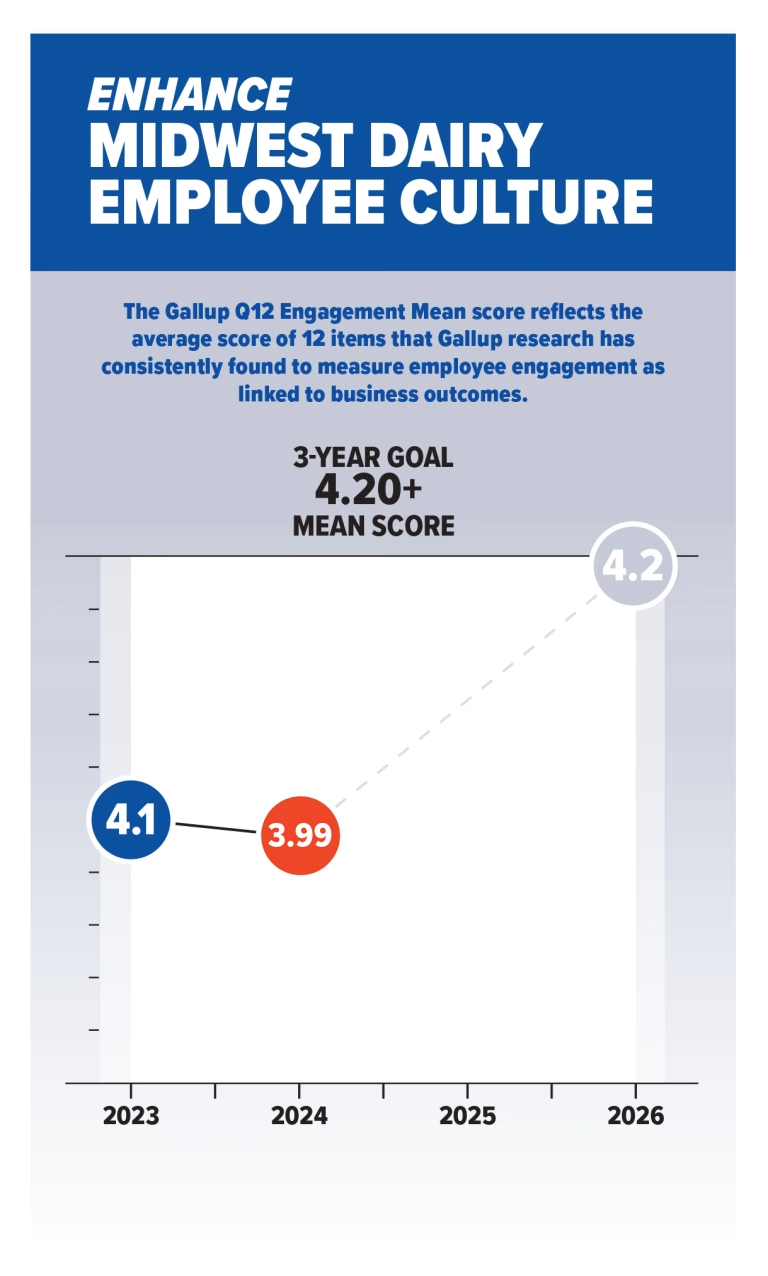
Enhance Culture
Employee engagement is the fuel for success in meeting our goals for the rest of the strategic plan. Higher employee engagement correlates to better business outcomes. Midwest Dairy’s overall engagement score has remained consistently above national averages during three years of tracking.
Based on long standing Gallup data, the slight dip in the 2024 employee engagement score was to be expected as employees experience some change from a transition in CEO leadership.
